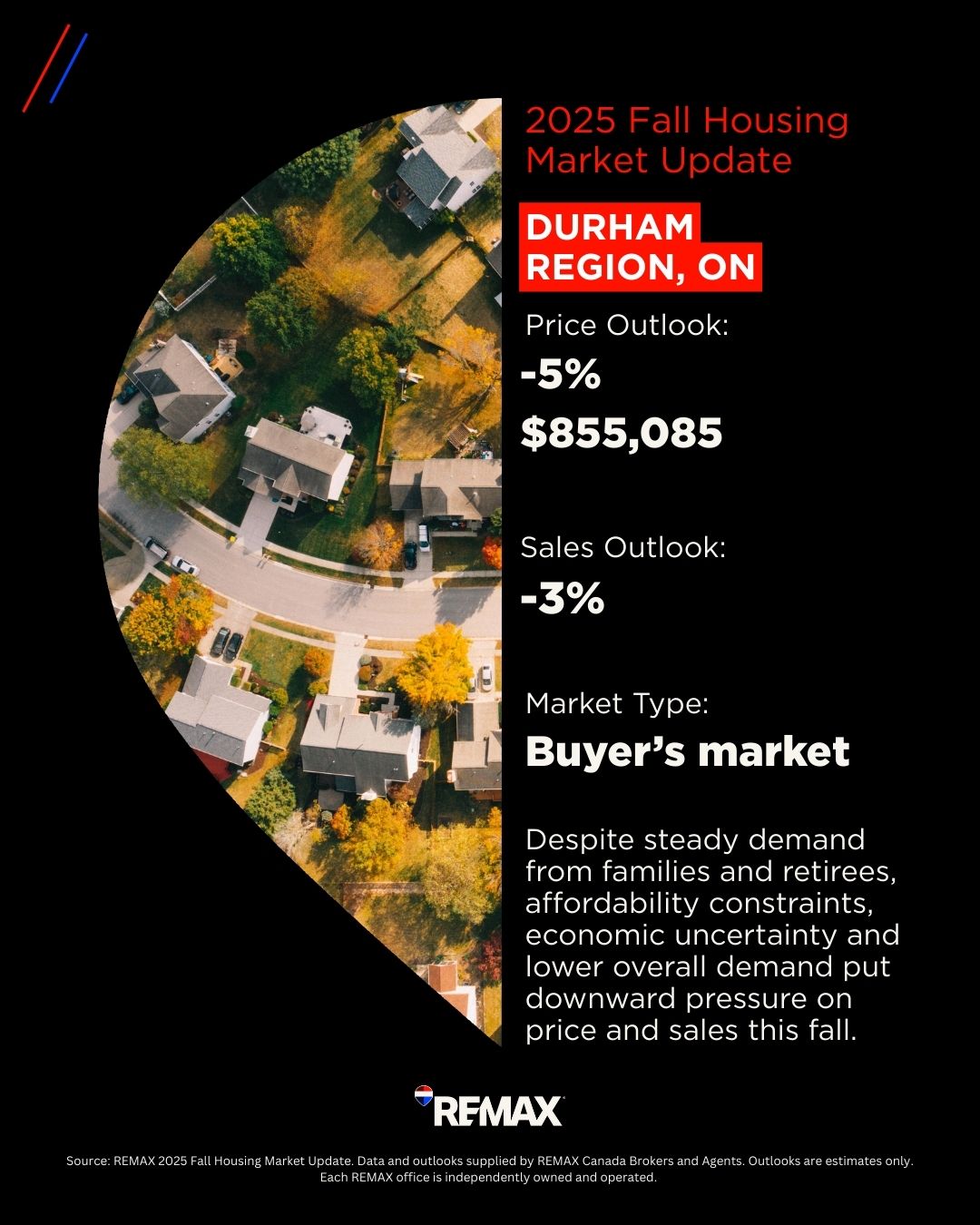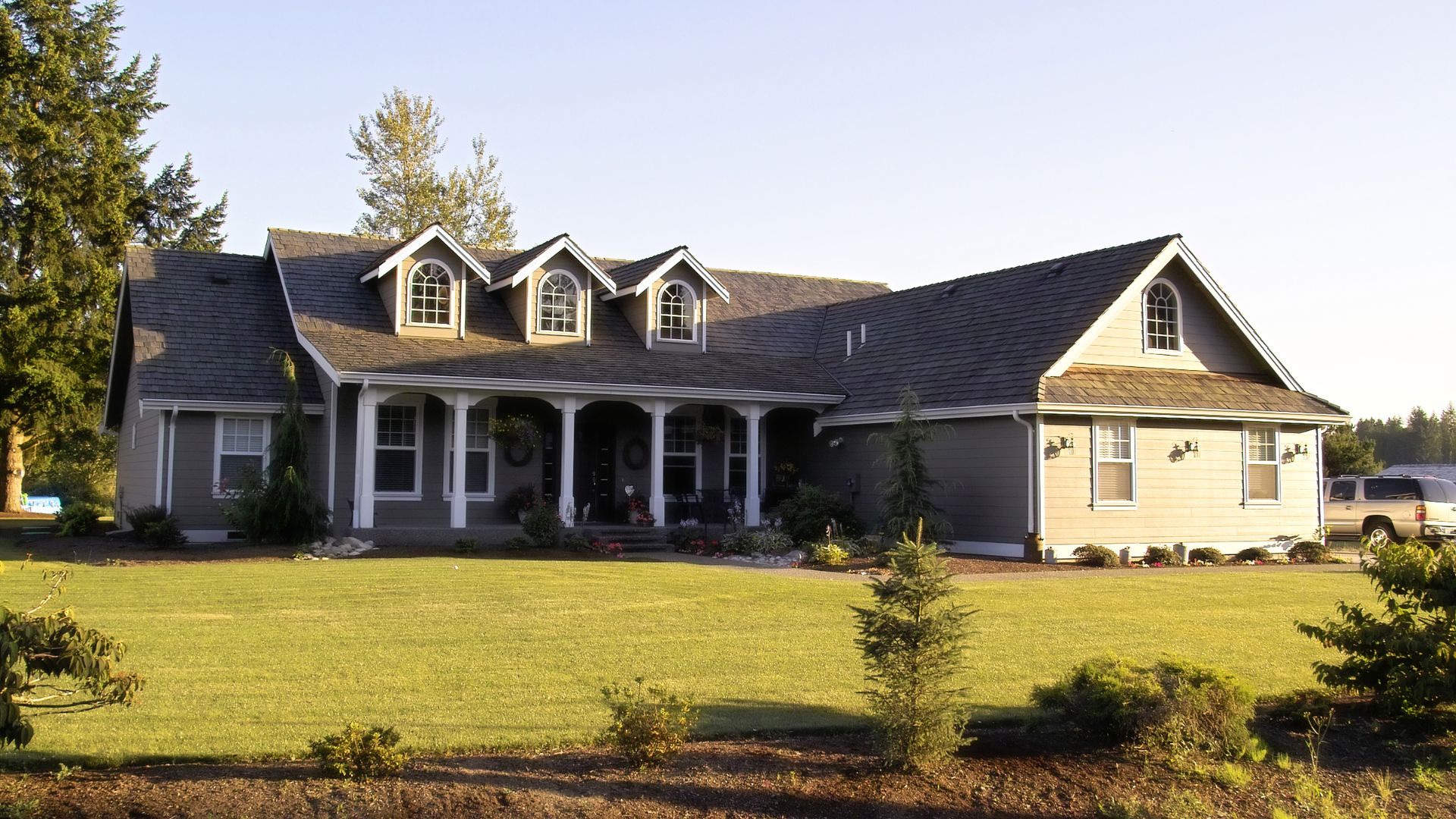The average residential sale price in Durham Region housing market has decreased by 3.7 per cent year-over-year across all property types between January 1 and July 2025 from $934,299 to $900,089. The number of sales decreased by 11.1 per cent for the same time period from 5,625 to 4,999. The number of listings increased by 14.4 per cent (from 11,732 in 2024 to 13,425 in 2025).
Trends in the Durham Region Housing Market
Average sales prices across all property types are anticipated to drop by five per cent through the end of 2025. Number of sales are also expected to decline slightly, by an estimated three per cent. This outlook is primarily shaped by buyer hesitancy, and while steady demand from families and retirees provides some stability, affordability constraints, economic uncertainty, and a slower pace of sales continue to put downward pressure on both prices and activity.
In Q4 2024, the Durham Region housing market remained a buyer's market, marked by high inventory and steady demand – a trend expected to continue through year-end. Market conditions have remained consistent with last year's, with ample listings providing greater choice for buyers. Homes are on the market longer than they would be in a seller's market, signalling a balanced climate for both buyers and sellers.
Families are the main drivers of housing demand in the region, a trend expected to continue through to the end of the year. Retirees are also drawn to the region for its quiet areas and flexible range of downsizing options which still offer good proximity to essentials and amenities.
The biggest challenge in the region is economic uncertainty, which is keeping many buyers on the sidelines and slowing overall activity. Sellers, many of whom entered the market with high price expectations based on past conditions, are now facing a smaller pool of qualified buyers. As listings sit longer and competition increases, more sellers are beginning to adjust their pricing and negotiation strategies to align with current market realities.
Buyer hesitation also remains a defining feature of the market, with many weary of sitting on the sidelines but still cautious about entering the market. The profile of the first-time buyer continues to shift upward, now averaging in the late thirties – a reflection of both affordability challenges and prolonged saving periods.
Increasingly, financial support from parents or shared ownership arrangements have become less of an exception and more of a necessity for entering the market. For existing homeowners, uncertainty around sales outcomes are adding another layer of tension, reinforcing a climate where confidence is slow to return.







